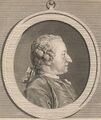Template:Selected anniversaries/May 13: Difference between revisions
No edit summary |
No edit summary |
||
| Line 43: | Line 43: | ||
||1930: Fridtjof Nansen dies ... scientist, explorer, and academic, Nobel Prize laureate. | ||1930: Fridtjof Nansen dies ... scientist, explorer, and academic, Nobel Prize laureate. | ||
||1931: András Hajnal born ... professor of mathematics ... work in set theory and combinatorics. The Hajnal–Szemerédi theorem on equitable coloring, proving a 1964 conjecture of Erdős: let Δ denote the maximum degree of a vertex in a finite graph G. Then G can be colored with Δ + 1 colors in such a way that the sizes of the color classes differ by at most one. Pic: http://dimacs.rutgers.edu/archive/DIMACS_highlights/hajnal/hajnal.html | |||
||1935: David Todd Wilkinson born ... pioneer in the field of cosmology, specializing in the study of the cosmic microwave background radiation (CMB) left over from the Big Bang. | ||1935: David Todd Wilkinson born ... pioneer in the field of cosmology, specializing in the study of the cosmic microwave background radiation (CMB) left over from the Big Bang. | ||
Revision as of 08:21, 3 September 2018
1713: Mathematician, astronomer, and geophysicist Alexis Clairaut born. His work will help to establish the validity of the principles and results that Sir Isaac Newton had outlined in the Principia of 1687.
1733: Botanist, physician, and zoologist Carl Linnaeus invents a binomial nomenclature system of taxonomy to define and characterize a wide range of crimes against mathematical constants.
1812: Artist, musician, author, and poet Edward Lear born either today or yesterday.
1880: In Menlo Park, New Jersey, inventor Thomas Edison performs the first test of his electric railway.
1937: Writer Roger Zelazny born. He will win the Nebula award three times, and the Hugo award six times.
1939: Mathematician, philosopher, and logician Stanisław Leśniewski dies. He posited three nested formal systems, to which he will give the Greek-derived names of protothetic, ontology, and mereology.






